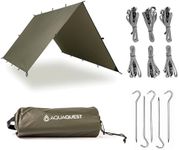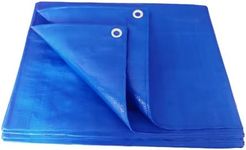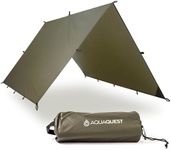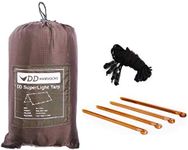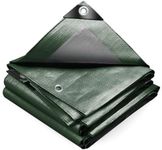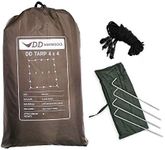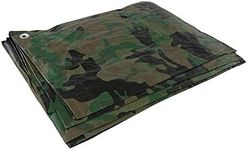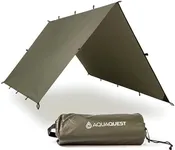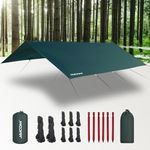Buying Guide for the Best Camping Tarps
Choosing the right camping tarp can significantly enhance your outdoor experience by providing shelter and protection from the elements. When selecting a tarp, consider the environment you'll be camping in, the weather conditions you might face, and how you plan to use the tarp. A good tarp should be durable, easy to set up, and suitable for your specific needs, whether it's for a solo backpacking trip or a family camping adventure.MaterialThe material of a camping tarp is crucial as it determines the tarp's durability, weight, and weather resistance. Common materials include polyester, nylon, and polyethylene. Polyester is lightweight and resistant to UV rays, making it a good choice for sunny conditions. Nylon is also lightweight and offers good strength, but it can absorb water if not treated. Polyethylene is heavier but offers excellent waterproofing and durability. Choose a material based on the weather conditions you expect and how much weight you are willing to carry.
SizeThe size of the tarp you choose will depend on how you plan to use it. Tarps come in various sizes, from small ones suitable for solo campers to large ones that can cover a family tent or create a communal area. A larger tarp provides more coverage and versatility but can be heavier and bulkier to carry. Consider the number of people and gear you need to cover and the space you have available for carrying the tarp.
WaterproofingWaterproofing is essential for keeping dry during rain. Tarps are often rated by their hydrostatic head, which measures how much water pressure the fabric can withstand before leaking. A higher rating means better waterproofing. For heavy rain, look for a tarp with a hydrostatic head of at least 1500mm. If you expect only light showers, a lower rating might suffice. Consider the typical weather conditions of your camping destinations when choosing the level of waterproofing.
WeightThe weight of a camping tarp is an important factor, especially for backpackers who need to minimize their load. Lightweight tarps are easier to carry but may compromise on durability and size. Heavier tarps offer more durability and coverage but can be cumbersome to transport. Balance the need for portability with the level of protection and coverage you require.
Setup EaseEase of setup is important for convenience and efficiency, especially in adverse weather conditions. Some tarps come with grommets, loops, or built-in poles that make them easier to pitch. Others may require additional equipment like ropes or stakes. Consider how much time and effort you are willing to spend on setting up your tarp and whether you prefer a quick and simple setup or are comfortable with a more complex arrangement.
VersatilityA versatile tarp can be used in various configurations, such as a tent footprint, a sunshade, or a rain shelter. Some tarps are designed with multiple tie-out points and reinforced corners to allow for different setups. If you plan to use your tarp for multiple purposes, look for one that offers flexibility in its design. Think about the different scenarios you might encounter and how a versatile tarp could meet those needs.

